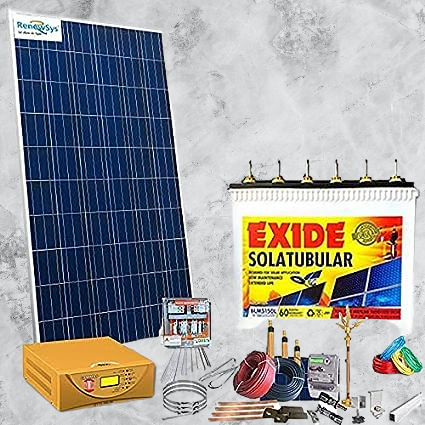How do I connect 16 panels consisting of 250-watt solar panels to a 24-volt system?
To connect
16 panels consisting of 250-watt solar panels to a 24-volt system, you'll need
to wire them in an appropriate configuration. Here's a step-by-step guide:
1.
Determine Panel
Configuration:
·
Panels can be connected in series,
parallel, or a combination of both (series-parallel) to achieve the desired
voltage and current levels. In your case, with 16 panels and a 24-volt system,
you'll likely need to wire them in a combination of series and parallel
connections.
2.
Panel Voltage and Current Ratings:
·
Confirm the voltage and current
ratings of your 250-watt panels. They are typically around 30 volts (Voc) and
8.33 amps (Isc).
3.
Calculate the Total Power Output:
·
In this case, if you have 16 panels,
each producing 250 watts, the total power output would be 16 x 250 watts = 4000
watts or 4 kilowatts (kW).
4.
Determine Series Connection:
·
Panels are connected in series to
increase voltage. Calculate how many panels you need to connect in series to
get a voltage close to 24 volts. Since each panel is around 30 volts, you'd
typically connect 7 panels in series, which would give you around 210 volts (7
x 30V).
5.
Determine Parallel Connection:
·
Next, you'll connect these sets of
series-connected panels in parallel to maintain the voltage but increase the
current. In this case, you'd have 2 sets of 7 panels in series, both connected
in parallel.
6.
Wiring Connections:
·
Use appropriately sized wires and
connectors for your connections. Make sure to use suitable connectors, such as
MC4 connectors, for weather-tight connections.
7.
Install a Solar Charge Controller:
·
Given that you're working with a
24-volt system, you'll need a charge controller capable of handling the voltage
and current produced by your panels.
8.
Connect to Batteries:
·
Connect the charge controller to
your battery bank. The charge controller regulates the charge going into the
batteries to prevent overcharging.
9.
Safety Considerations:
·
Ensure proper grounding and follow
electrical safety guidelines when working with high-voltage systems.
10.
Monitoring and Maintenance:
·
Install a monitoring system to keep
an eye on the performance of your solar array. Regular maintenance checks are
important for optimal efficiency.
11. Compliance and Regulations:
·
Be sure to follow any local codes,
regulations, and permit requirements for your solar installation.
If
you're not familiar with electrical systems, it's highly recommended to consult
a professional or an electrician with experience in solar installations. They
can ensure the system is correctly configured and safe to use. Remember,
working with electricity can be dangerous, so safety should always be a top
priority.
.jpg)


%20(31).jpg)
Comments
Post a Comment